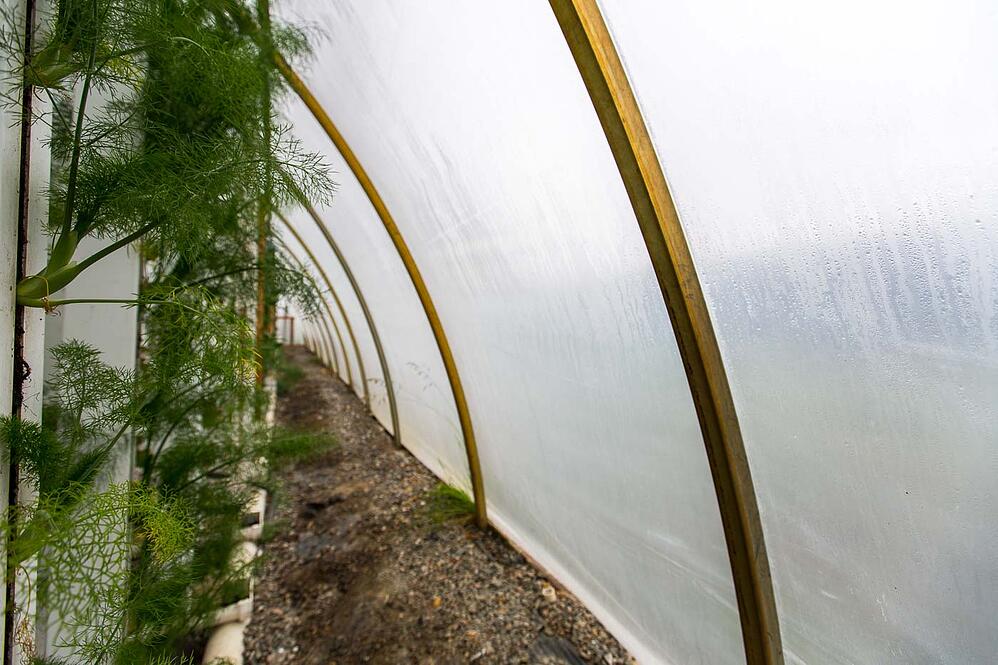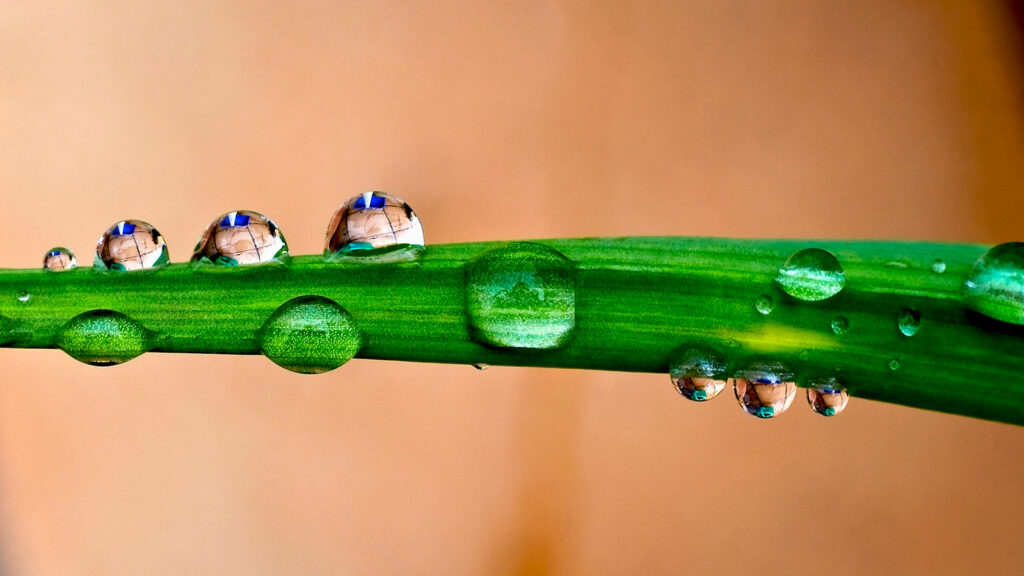Have you ever walked into a greenhouse in the morning, as the sun rises? You open the door, step forward, and your glasses immediately fog up. You breathe in that fresh, warm, air. On all of the walls, water drips and trickles- condensation accumulated overnight. Even the plant leaves are shimmering with their collected water.
It’s a beautiful scene to most people. To farmers it means a bit more.

High humidity is a problem that any indoor grower – greenhouse, warehouse, or otherwise – is familiar with. Wet leaves might be pretty and clean looking, but they could mean disease and nutrient uptake problems if the humidity isn’t controlled.
We’ve had our fair share of those humid greenhouse mornings, and over the years we’ve learned that solving the humidity problem isn’t too complicated.
The Humidity Problem: Disease and Transpiration
Why is humidity such a big deal? Well, humidity is moisture in the air which often condenses on any surface area it can when the air cools. The main reason that this is a problem is that most of the organisms that love humidity – bacterial pathogens, molds, and many other kinds of fungi- cause plant disease and encourage other pests.
Not only will humidity encourage pathogens and pests, it can actually affect uptake of certain nutrients. This happens because one way that plants take up nutrients is through passive uptake. Basically transpiration from the leaves (the top of the plant) creates a sort of one-way siphon that draws water up through the plant. (Think of how a straw works. Transpiration is the “sucking” action at one end of the straw.)
When your greenhouse experiences very high humidity, transpiration rates decrease. Which means… lower passive uptake. While this only affects certain nutrients, like calcium, it can pose a threat to plant health.
Solving humidity problems
Before solving the problem, you have to understand the cause. In the case of humidity, there is one main culprit: transpiration.
Maybe you’re thinking, “but if transpiration decreases when the humidity gets high, then humidity levels should control themselves, right?”
Well, by the point humidity levels get high enough to decrease transpiration, you already have a problem. You don’t want humidity to get that high.
So what do you do to reduce humidity? You’re not going to decrease transpiration.
- Increase ventilation
The first thing any grower should do to reduce humidity is ventilate. There’s absolutely no getting around this step. It’s the low hanging fruit, and most greenhouses are already equipped with some ventilation equipment.This means opening doors, running fans, and creating good air flow. Obviously this can be more difficult in dense setups, so I encourage you to plan your layout to facilitate good air flow. - Control temperature
The second lowest hanging fruit to reduce humidity is to control temperature. This is because temperature influences relative humidity.This can be a bit tough, especially if you live in a place that gets cold winters. Since you have to ventilate in the winter, too, you’ll be very actively controlling temperature. Check out this article on heating a greenhouse for more tips.
Measuring and monitoring humidity
Tempting as it may be, don’t lean on your senses to gauge humidity. Humidity meters are affordable and important to accurately management of humidity. (You can get one for as low as $10 at a Walmart.)
Most indoor growers will want to aim for 50-70% relative humidity, although 60-80% is usually tolerable.
In Conclusion: Explore, Analyze, and Act
Coming up with a ventilation plan could take ten minutes. Heck, open up a new tab and start checking out ventilation fans and meters right now. As you move through the plan remember:
- Explore your options
- Analyze the cost
- Decide on the most affordable and effective way to control humidity
Thanks for reading, be sure to sign up for updates and our newsletter!






